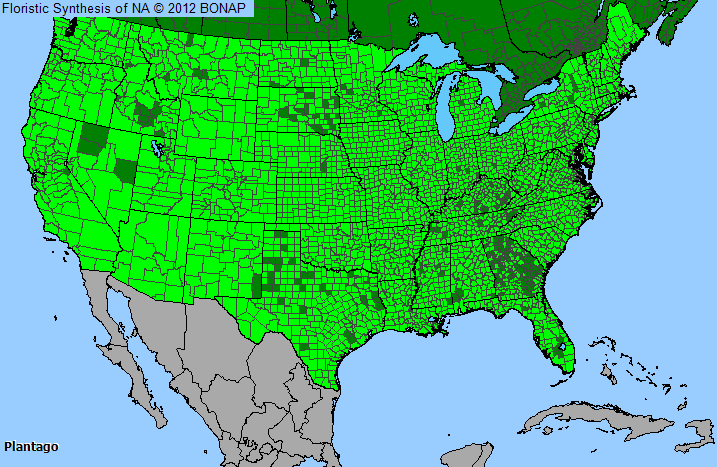
Plant Allergy Overview
Allergenicity
Moderate
Pollen Season
Summer Fall
Type
Weed
Sub-Type
Annual
Allergy Information
The English plantain (Plantago lanceolata) sheds the most pollen and is most allergenic of the plantains. Plantain pollen is considered by some allergists to be a significant problem, particularly in the eastern coastal states, the Northwest, and California.
Genus Details
These short, herbaceous plants are less than 1 foot tall with a rosette of lance- or ovate-shaped leaves at the base. A flowering spike with small, green to brown flowers grows from the center of the base. About 20 species of the plantain weed are native or naturalized in North America. The flowering season is similar to grasses and occurs during May until November for these wind-pollinated species. Flowering for this weed occurs primarily in May and June which coincides with the most severe portion of the grass pollen shed. Fleawort, P. psyllium, produces medicinal seeds which may cause allergy symptoms if ingested. Rugel's plantain (P. Rugelii) and the common or greater plantain (P. major) are the most common of the other species. Both species have become widely established in open fields and waste areas. These species flower throughout the summer.
Pollen Description
Pollen grains are spheroidal and pantoporate; the 3-10 pores circular to slightly lalongate. The sexine is scabrate with an undulating and densely granular surface.
Grains are 26-31 micrometers in diameter.
Genus Distribution

The shaded areas on the map indicates where the genus has been observed in the United States.
 - Native, observed in a county
- Native, observed in a county  - Introduced, observed in a county
- Introduced, observed in a county  - Rarely observed
- Rarely observedSpecies in Plantain Genus
Allergens & Plants Search
Enter a full or partial species name to find more information on one of over 1,200 potentially allergenic plants.
For example, you can find chenopods searching on "cheno"

